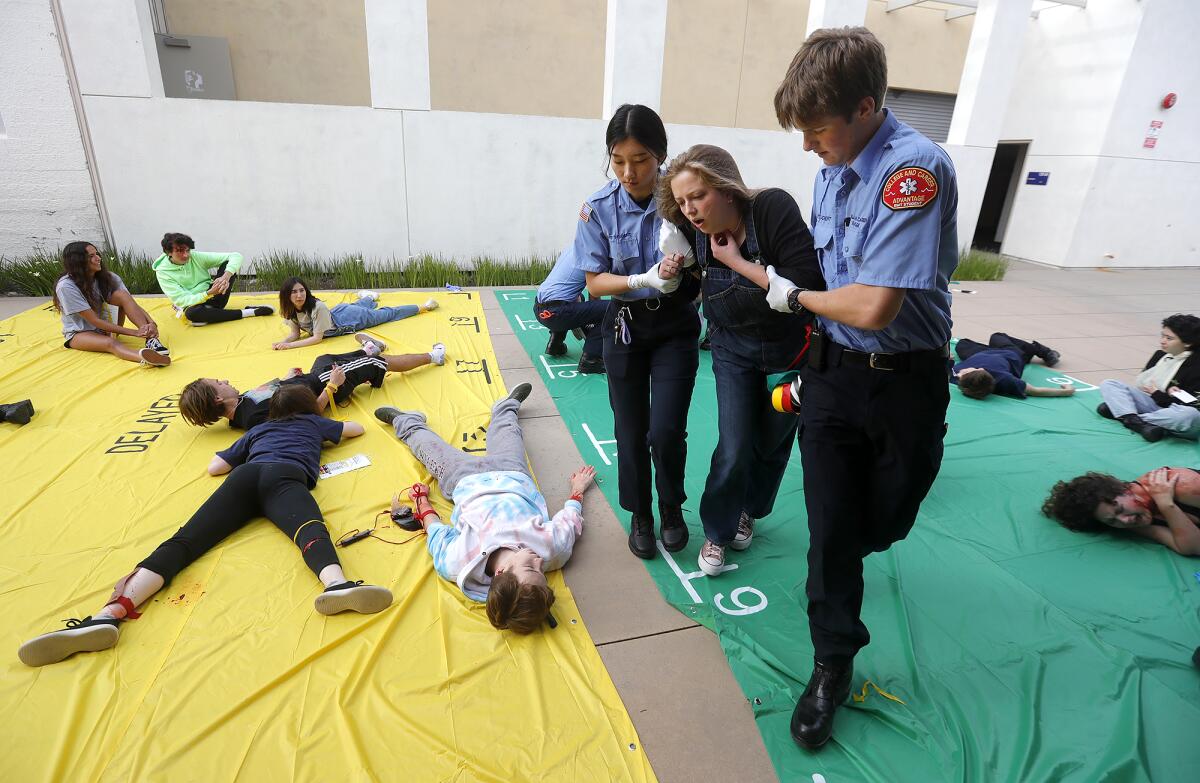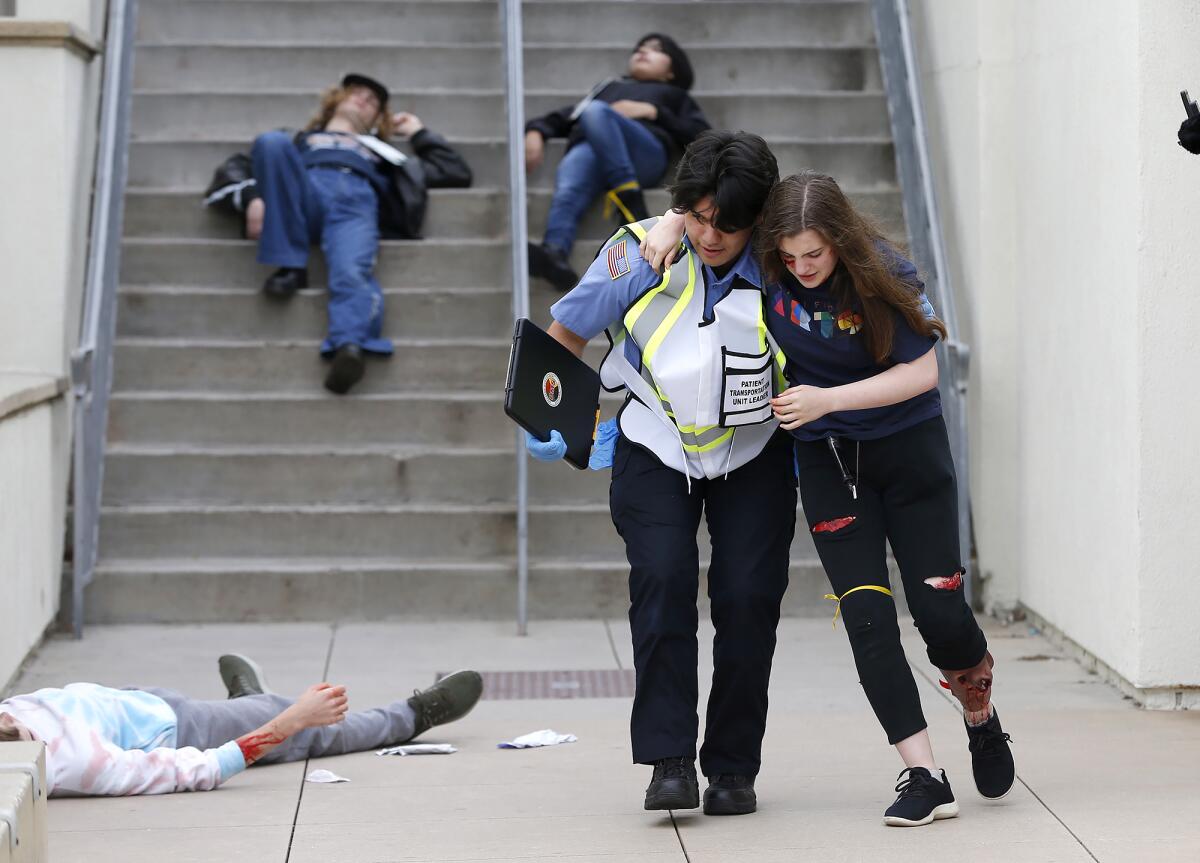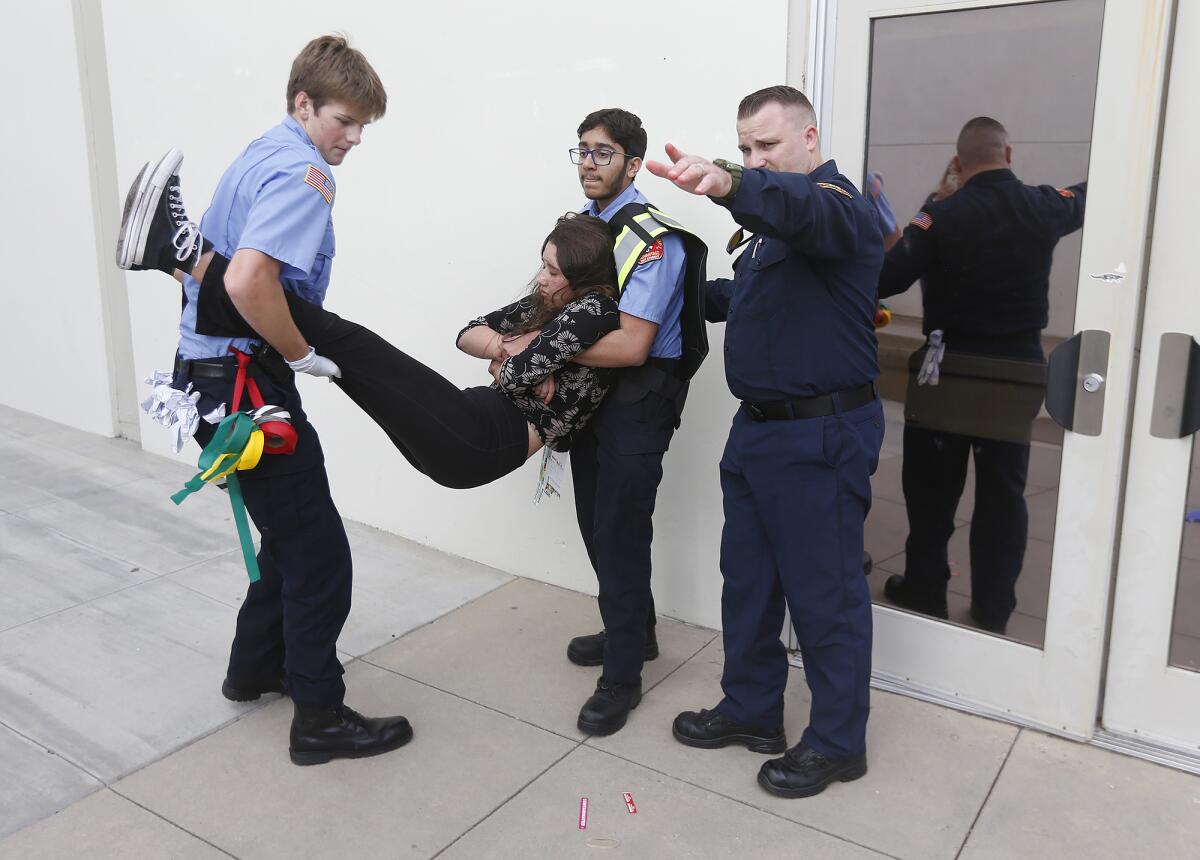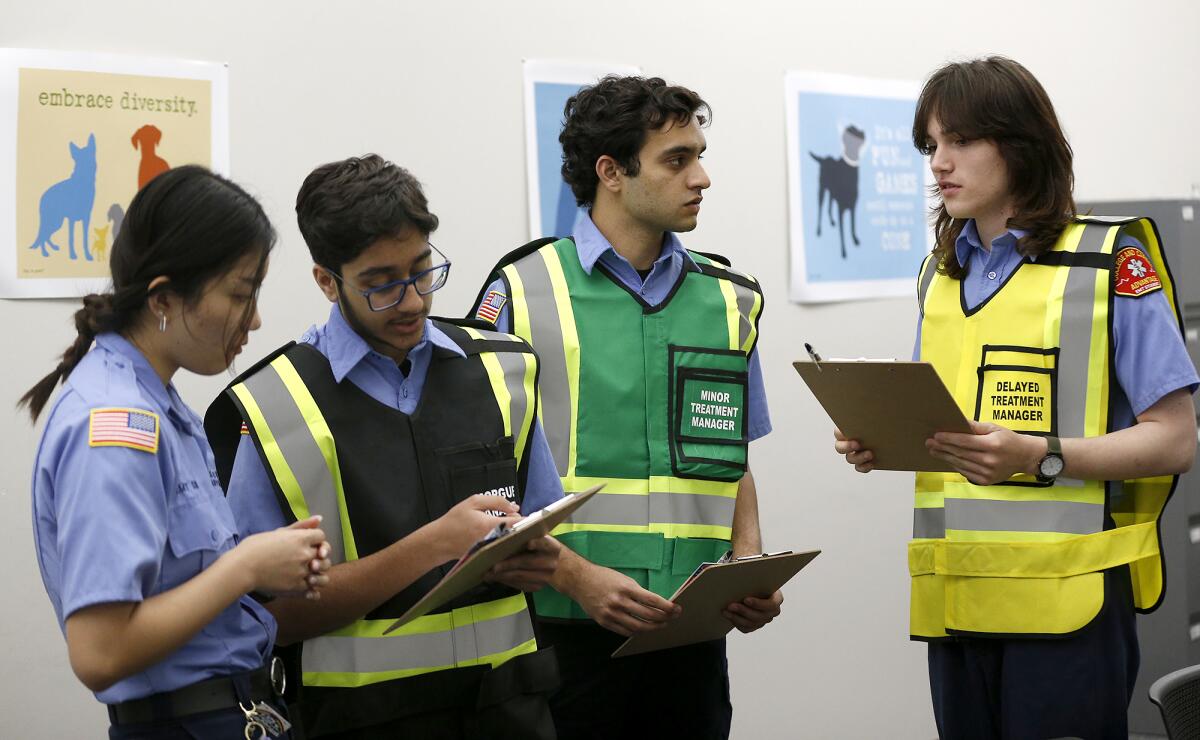Brains behind zombie apocalypse at Laguna Beach High School have learning in mind

Zombies descended on Laguna Beach High School early Wednesday evening, leaving in their wake a number of festering wounds and injuries in the subsequent chaos.
Yes, you read that right: zombies.
Or, at least, young actors playing zombies from the high school’s theater career technical education pathway, as part of a larger simulation for students enrolled to become emergency medical technicians.
The simulation, planned since April, came about at the suggestion of career education coordinator Kellee Shearer, who said she’d done similar scenarios at another district.

“The prior events that I ran were a great collaboration between both CTE pathways and the local police and fire departments,” Shearer said in an email on Wednesday. “It allowed our CTE EMT students to showcase their first responder skills, field triage and search and rescue; as well as our CTE theater students being able to highlight their make up and costuming skills, in addition to using their acting skills in a nontraditional way, playing the role of victims.”
Shearer said she pitched the idea to theater teacher Meghan Marshall and EMT teacher Eric Johnson. The three coordinated efforts to plan the zombie simulation as realistically as possible.
“One of the most important things that we do with my class and anything in CTE is learning how it’s done in the real world. There’s a lot of theory into learning these days, but application is one of the most important things that we practice,” Johnson said. “This kind of hands-on training and showing them what they learned in the classroom and what that looks like in a controlled environment is important.
“It’s one of those things that, until you do it with your hands, it sounds good on paper. Once you add in the additional components — realistic injury makeup, all the equipment you would use in a [mass casualty incident], radio communications — all these complicating factors, you get to see where you excel and where we need to continue training. We do this kind of practice in the real world all the time.”

Johnson said the idea to design the simulationcame from an article about a fictitious plan written by junior military officers on how to respond in the event of an actual zombie apocalypse.
“It’s really done with a kind of tongue-in-cheek kind of a way. What are the odds that that’s going to happen? Pretty much zero, but it’s something that would utilize all of the resources across a wide variety of agencies to prepare their own response, and because it’s so firmly rooted in science fiction, there’s no way people are going to end up terrified with the results,” Johnson said.
“It makes it more equitable, and that’s also the more fun aspect. These are high school students preparing to go do a very serious job, but it’s important to remember they’re still young adults,” he added, noting that his students were only somewhat aware of the situation they were going to walk into.

Marshall said the simulation included more than a dozen theater students acting as victims in the scenario with the assistance of special effects artist Laura Barrow. Marshall worked through backstories with some of her students as they devised realistic reasons to have been on campus after hours.
“Some of them developed relationships [in character], and so certain ones are related to one another, and all we were given from the EMT class was their age, gender, heart rates and their injuries,” Marshall said. “So, they took that and looked at ‘How did this person get this injury? Why were they here at the high school? Were they on their way to pick up someone from school?’ They took it very seriously.”
It was important, though, to set limits in the role, Marshall said.

Students and Marshall discussed safe words in the event that a student, while acting severely injured, felt anxious in the moment and needed to take a step back or remove themselves from the simulation altogether.
“I think, with everything that’s happening right now in terms of TV shows and movies, the students are really into sci-fi. [Using a zombie scenario] helps keep it lighthearted. It keeps it from being completely real, but the injuries are real enough that they can be taken seriously. It helps with a healthy barrier between getting too invested in a role, where it could actually be harmful to your mental health or well-being,” Marshall said.
Johnson said the program has had simulations before, though none on this scale of effort and coordination. It was Shearer, Marshall and Johnson’s hope to expand the activity to once a semester so students could see how their skills progress, though Marshall noted she hoped to make it a more teachable moment, similar to the two-day “Every 15 Minutes” program that encourages teens to think about the ramifications of drinking before getting behind the wheel of a vehicle.
All the latest on Orange County from Orange County.
Get our free TimesOC newsletter.
You may occasionally receive promotional content from the Daily Pilot.




